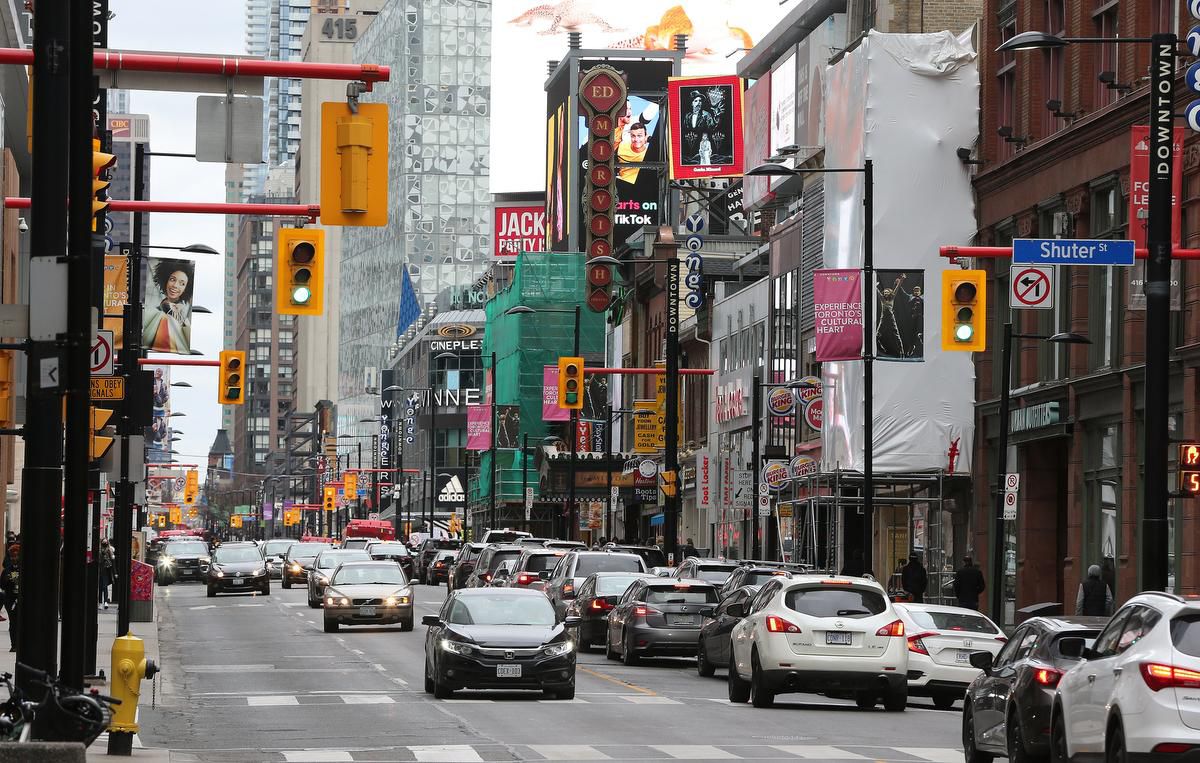[ad_1]
The City of Toronto recently announced plans to redesign a portion of Yonge Street between Carlton and College streets and Queen Street that could reduce traffic to two lanes and limit vehicle access. The city wants to expand sidewalk and pedestrian spaces. Some laud these project as making Toronto more bicycle- and pedestrian-friendly, while others argue it deters people from going downtown, hurting stores and restaurants.
We asked Cycle Toronto campaign manager Kevin Rupasinghe, executive director and chief staff officer of the Downtown Yonge BIA Mark Garner and Coun. Stephen Holyday (Ward 2 Etobicoke Centre) to tell us what they think of these shared roadway projects in roughly the time same time it takes to order and pick up from a drive-thru window.
“Whenever our city changes, people are understandably nervous. This happened before bike lanes on Bloor Street or patios on the Danforth were installed, yet these projects that prioritized public space for people were lauded once finished! In fact, 95 per cent of businesses surveyed support repurposing road space for CaféTO patios. Prioritizing local access through walking and cycling while maintaining driving, parking, and TTC access allows businesses to thrive. The area around Yonge is rapidly developing and the street needs to develop with it. In the process, we’ll get safer roads, cleaner air, less traffic and booming business — a win for everyone.†— Kevin Rupasinghe
“Like any great high street, Yonge Street needs to work for drivers and pedestrians. Yonge was built as an economic artery and continues in that role. It has always been a major gathering place, which is why we need wider sidewalks and an improved pedestrian experience. Yonge is ideal as a ‘flexible street’ — regular, two-way vehicle traffic (one lane in each direction) to keep businesses strong; wide, pleasant, functional sidewalks to welcome pedestrians; and occasional closures for large festivals, events and activations as key economic drivers and a cultural boost for the neighbourhood and the City of Toronto. As a flex street, Yonge can work for everyone.†— Mark Garner
“Movement around Toronto must be inclusive of all modes to attract people to live, work and fuel businesses in our city, particularly in the downtown core. For citizens who cannot always bike, take transit or walk, automobiles enable access to jobs, services and destinations outside of their immediate neighbourhoods. Changes in living and leisure patterns emerging from COVID-19 could increase the auto-mode share, causing policies meant to create congestion and dissuade vehicle use to backfire. Allowing all transportation methods to be wholly accessible will facilitate connectivity, whereas making getting in and out of Toronto miserable will discourage people to visit.†— Stephen Holyday
[ad_2]
Source by [author_name]






